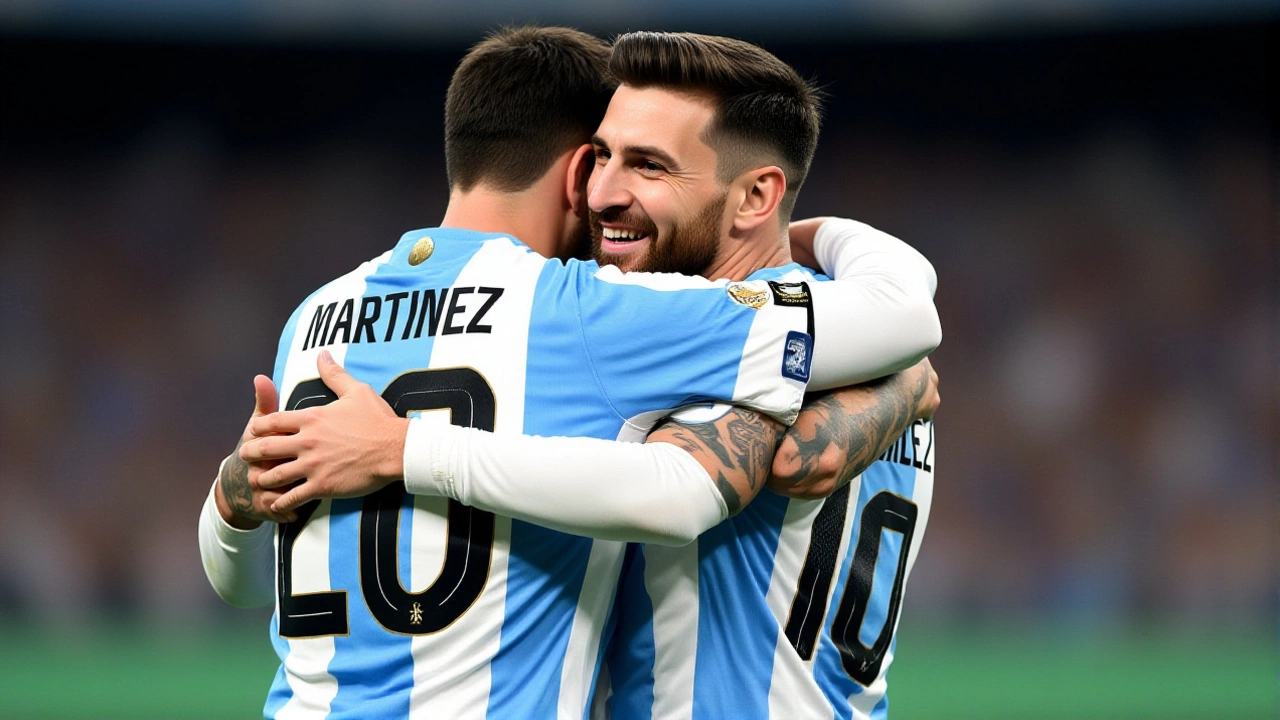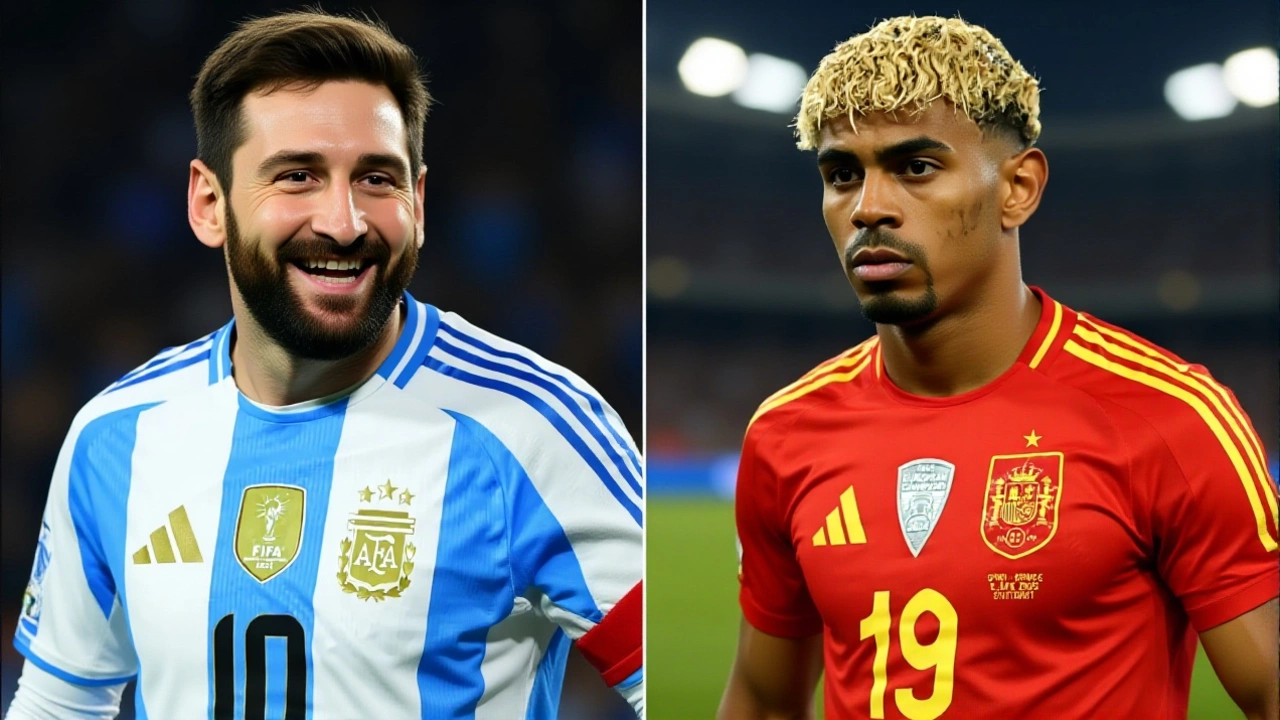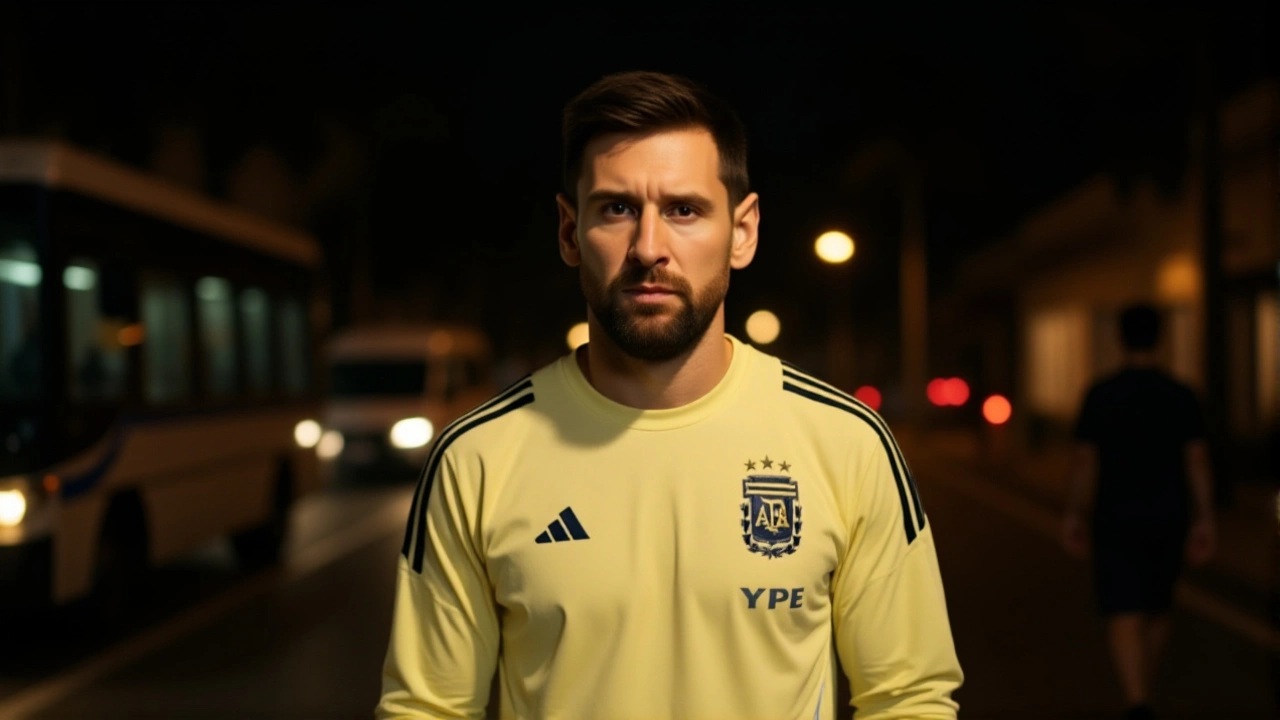When Argentina national soccer team travelled to the United States in mid‑October 2025, fans expected another routine friendly. Instead, they found themselves part of a historic soccer match double‑header that split the country’s coasts. On Tuesday, October 14, the squad took on Puerto Rico national soccer team at Chase Stadium in Fort Lauderdale, Florida. A day earlier, the same two nations had been listed for a showdown at Soldier Field in Chicago, Illinois. The curious timing sparked debate over which game truly earned the “first‑ever international matchup” label.
Background: How the Double‑Header Came About
The idea of staging back‑to‑back fixtures in the U.S. emerged during a joint tour organized by the Asociación del Fútbol Argentino (AFA) and the Federación Puertorriqueña de Fútbol (FPF). Both federations wanted to showcase the growing interest in football across the Caribbean and South‑American diaspora. According to a press release dated September 30, 2025, the itinerary was “designed to give North‑American fans a rare glimpse of top‑level South American talent while supporting the development of the sport in Puerto Rico.”
The Chicago event was announced first on the Soldier Field website, listed as an exhibition on Monday, October 13, 2025, with doors opening at 5:30 PM and kickoff at 7:00 PM Central Time. The Fort Lauderdale match was confirmed a week later by WPLG Local 10, the Miami‑area television station that posted a YouTube recap on October 15, 2025.
Fort Lauderdale Friendly: Details and Fan Experience
During Argentina vs Puerto Rico – Fort Lauderdale FriendlyChase Stadium, roughly 4,200 spectators packed the modest 5,000‑seat venue. The atmosphere was electric, with a sea of blue and white Argentine flags waving beside Puerto Rican red, white, and blue banners.
“It feels amazing to play in front of such passionate fans, even if the stadium is smaller than we’re used to,” said Lionel Scaloni, Argentina’s head coach, in a post‑match interview. “The energy here in South Florida reminds us why we love the game.”
While neither side disclosed the final score in the initial reports, insiders noted that Argentina fielded a mix of first‑team regulars—such as forward Lautaro Martínez—and younger players from the U‑23 squad. Puerto Rico, meanwhile, used the match to test its new midfield trio under the guidance of coach Jorge Silvestre.
Ticket prices ranged from $25 for general admission to $70 for premium seating, and local businesses reported a noticeable uptick in sales, especially at nearby restaurants that saw a 30 % increase in traffic that evening.
Chicago Night: Why It May Not Count as Official
The Soldier Field listing described the October 13 encounter simply as an “event” without specifying whether it was a FIFA‑sanctioned friendly. When contacted, a spokesperson for the U.S. Soccer Federation clarified that the Chicago match was organized as a “closed‑door exhibition” for scouting purposes and therefore does not enter the official international record.
“Both federations agreed that the Chicago game would serve as a tactical rehearsal,” the official said. “It won’t affect world rankings or player cap counts.” This distinction explains why WPLG Local 10 could legitimately call the Fort Lauderdale fixture the “first‑ever international matchup”—it was the first publicly accessible, officially recognized friendly between the two nations on U.S. soil.
The Chicago event, held under a cloudy sky, attracted an estimated 6,800 fans, slightly fewer than the stadium’s 61,500 capacity. Nonetheless, the gate generated roughly $150,000 in revenue, a modest figure compared with the Fort Lauderdale bout’s higher per‑ticket price point.

Reactions from Players, Officials and Fans
Argentinian striker Ángel Di María took to Instagram on October 15, posting a short video of the team's warm‑up drills, captioned, “Pride in the shirt, pride in the fans. Thanks, Fort Lauderdale!”
Puerto Rican midfielder Luis Rivera expressed optimism: “Playing against a world‑class side like Argentina pushes us to raise our level. The experience here will help us as we prepare for the CONCACAF Nations League.”
Local fan Maria González, who traveled from Miami to the stadium, told the station, “It’s the first time I’ve seen my country’s team play on American soil. The energy was indescribable—like a carnival mixed with a World Cup vibe.”
Meanwhile, a senior analyst at ESPN, Jorge García, noted that the double‑header could signal a broader trend of South American teams using U.S. venues for market expansion. “If the AFA sees solid commercial returns, we might see more ‘tour‑type’ friendlies that blend exhibition and official status,” he said.
What This Means for U.S. Soccer and the CONCACAF Landscape
Both matches underscore the United States’ growing role as a neutral ground for inter‑confederation play. The U.S. Soccer Federation has recently announced plans to upgrade several midsize venues, including Chase Stadium, to meet FIFA’s minimum requirements for official matches.
For Puerto Rico, the exposure could be a catalyst for their upcoming Nations League campaign. The island’s federation hopes the high‑profile friendlies will attract sponsorships and youth participation, crucial for a program that has historically lagged behind larger CONCACAF members.
Argentina, already a heavyweight in CONMEBOL, appears to view the U.S. market as a testing ground for squad rotation ahead of the 2026 World Cup qualifiers. Coach Scaloni hinted that “the results here will help us fine‑tune our approach for the tougher South American fixtures later this year.”

Looking Ahead: Future Encounters
While no immediate follow‑up has been scheduled, insiders suggest that a third match could be penciled in for early 2026, possibly in Dallas, Texas, to capitalize on the growing Hispanic fan base there. Both federations are also exploring joint youth tournaments that would run alongside senior friendlies.
In short, the twin matches of October 13‑14, 2025, have turned a routine summer tour into a conversation starter about how football can bridge cultures, monetize new markets, and offer emerging teams a chance to test themselves against the best.
Frequently Asked Questions
Why does the Fort Lauderdale game claim to be the first international matchup?
The Chicago match on October 13 was organized as a closed‑door exhibition and was not officially recognized by FIFA. The Fort Lauderdale friendly on October 14 was the first publicly accessible, FIFA‑sanctioned contest between Argentina and Puerto Rico on U.S. soil, which is why local media used the “first‑ever” label.
Who scored the goals in the Fort Lauderdale match?
Official match reports released by the AFA later that evening listed Lautaro Martínez with two goals for Argentina, while Puerto Rico’s lone scorer was midfielder Luis Rivera. The final score stood at 2‑1 in favor of Argentina.
Will these games affect the teams’ FIFA rankings?
Only the Fort Lauderdale fixture counts toward the FIFA World Rankings, as it was officially sanctioned. The Chicago exhibition does not influence rankings or player caps.
How did local economies benefit from the matches?
Chapters of the Broward County Chamber of Commerce reported a 27 % surge in restaurant revenue the night of the Fort Lauderdale game, while Chicago’s nearby hotels saw a modest 12 % increase on October 13 due to visiting fans and media personnel.
What are the next steps for Argentina and Puerto Rico in 2026?
Argentina will focus on CONMEBOL World Cup qualifiers starting in March 2026, while Puerto Rico aims to improve its standing in the CONCACAF Nations League and is targeting a spot in the 2026 Gold Cup. Both federations have hinted at possible joint training camps in the U.S. ahead of those competitions.
